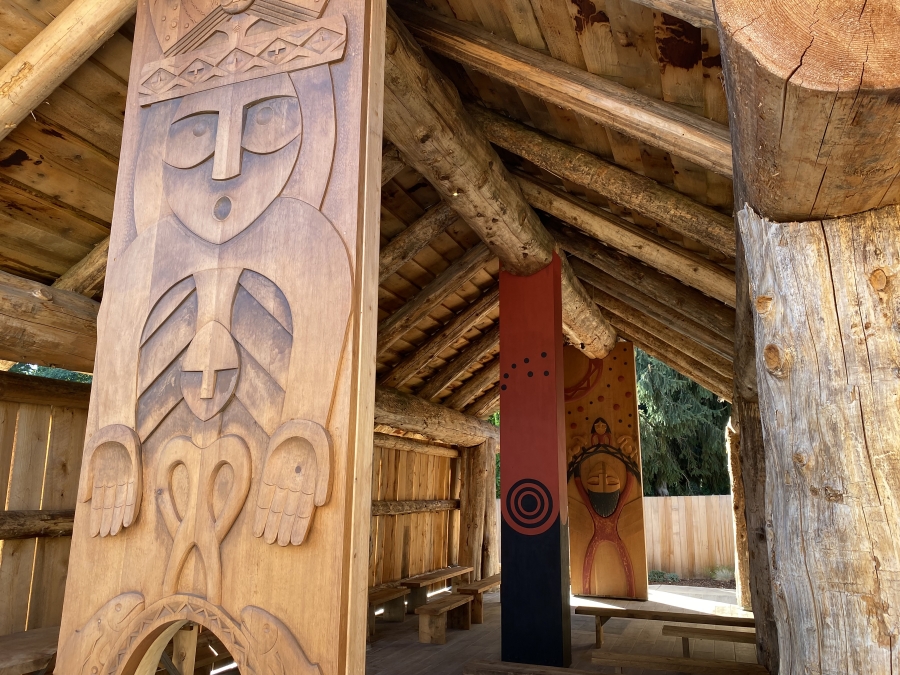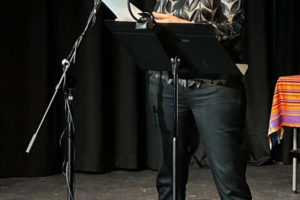The practice of gift giving has unique significance in many indigenous cultures. The practice shows respect to the receiver of the gift, as well as to their family members and ancestors. It is also a way to show appreciation for guidance or advice, or for assistance from those with distinct abilities such as healers or ceremonialists. Several tribes traditionally welcome visitors with gifts as well.
Standing in front of the newly dedicated Gathering Place at Washuxwal pavilion at the Two Rivers Heritage Museum on Sept. 18, Camas-Washougal Historical Society president Jim Cobb presented Sam Robinson, the vice chairman of the Chinook Indian Nation, with a gift both men hope will serve as a symbol of the partnership that the new pavilion represents.
The Chinook Indian Nation is made up of the five western-most Chinookan-speaking tribes at the mouth of the Columbia River — the Clatsop and Cathlamet (Kathlamet) of present-day Oregon and the Lower Chinook, Wahkiakum (Waukikum) and Willapa (Weelappa) of what is now Washington state.
“We hope our relationship with the tribe can get solid and we can work together with educational programs and use this place to help bring back the local history and stories of the past,” Cobb said to the small group of supporters and guests who gathered to celebrate the completion of the new pavilion.
Planning for the project began in 2015 when a landscape architect suggested to CWHS leaders that they should consider constructing some sort of pole building for meetings and gatherings. Efforts escalated in 2017 after CWHS members linked the building to the area’s indigenous culture and began fundraising efforts that eventually raised enough money for the $260,000 project.



